Near Field Communication (NFC) is a short-range wireless technology that enables devices to communicate when they are brought into close proximity, typically within a few centimeters of each other. NFC technology has gained widespread adoption in recent years due to its convenience and versatility, offering a range of applications that enhance our daily lives. Learn how to use NFC on Android.
In this comprehensive guide, we delve into the world of NFC, providing you with the knowledge and tools to harness its power for contactless payments, data sharing, and more. Discover how to set up and use NFC devices, troubleshoot common issues, and optimize your NFC experience to its fullest potential.
Unveiling the Fundamentals of NFC Technology
NFC technology operates on the principle of electromagnetic induction, where two NFC-enabled devices exchange data through the transmission of radio waves. This data exchange occurs within a very short range, making NFC a secure and reliable technology for contactless communication.
NFC devices typically consist of two components: an NFC antenna and an NFC chip. The antenna is responsible for transmitting and receiving radio waves, while the chip processes the data exchanged between devices.
NFC Applications: A World of Possibilities
NFC technology has revolutionized the way we interact with the world around us, offering a plethora of applications that enhance our mobile experience and streamline everyday tasks. Let’s explore some of the most common NFC applications:
- Contactless Payments: NFC has revolutionized mobile payments, allowing users to make secure and convenient contactless transactions using their smartphones or NFC-enabled cards. Simply tap your device on a contactless payment terminal to complete your purchase.
- Data Sharing: NFC makes it easy to share data between devices, such as exchanging contact information, transferring files, or pairing devices. Simply tap your device on another NFC-enabled device to initiate the data transfer.
- Smart Labels and Stickers: NFC tags and stickers are embedded with NFC chips, enabling them to store and transmit data. These tags can be attached to various objects, such as posters, product packaging, or even business cards, to provide additional information or interactive experiences.
- Access Control and Authentication: NFC is widely used in access control systems, allowing users to unlock doors, gain access to restricted areas, or authenticate their identities using NFC-enabled badges or key fobs.
- Public Transportation: NFC-enabled cards and tickets are increasingly used for public transportation systems, enabling users to pay fares, access stations, and navigate transit networks with ease.
Comparison chart of the most common NFC Apps:
| Feature | Google Pay | Samsung Pay | NFC Tools | Smart NFC |
|---|---|---|---|---|
| Payment | Yes | Yes | No | No |
| Data Sharing | Yes | Yes | Yes | Yes |
| Tag Reading | Yes | Yes | Yes | Yes |
| Task Automation | Yes | Yes | Yes | Yes |
| Security Features | Strong encryption, tokenization, device verification | Strong encryption, device verification | Password protection, file encryption | Password protection, task approval |
| Ease of Use | Simple interface, intuitive setup | Simple interface, intuitive setup | Easy-to-use interface, customizable | Easy-to-use interface, wide range of features |
| Compatibility | Most Android devices, contactless payment terminals | Most Samsung devices, contactless payment terminals | Wide range of NFC devices, Android devices | Wide range of NFC devices, Android devices |
| Additional Features | Loyalty cards, transit passes, gift cards | Loyalty cards, transit passes, gift cards | NFC tag programming, device triggers | NFC tag programming, device triggers, file sharing |
| Cost | Free | Free | Free | Free |
As you can see, all of these apps offer a variety of features that can be useful for NFC users. The best app for you will depend on your specific needs and preferences.
When deciding how to use NFC on Android, consider these pros and cons of each app:
Google Pay:
Pros:
- Widely compatible with NFC payment terminals
- Supports a variety of payment methods
- Secure and reliable
Cons:
- Does not support all NFC tags and stickers
- Not as customizable as some other apps
Samsung Pay:
Pros:
- Secure and reliable
- Supports a variety of payment methods
- Compatible with a wider range of NFC tags and stickers than Google Pay
Cons:
- Only compatible with Samsung devices
- Not as widely compatible with NFC payment terminals as Google Pay
NFC Tools:
Pros:
- Easy to use
- Customizable
- Supports a wide range of NFC tasks
Cons:
- Not as secure as some other apps
- Does not support NFC payments
Smart NFC:
Pros:
- Easy to use
- Wide range of features
- Secure
Cons:
- Not as widely compatible as some other apps
- Can be a bit buggy
Ultimately, the best way to choose the right NFC app for you is to try out a few different ones and see which one you like best.
Harnessing the Power of NFC: A Step-by-Step Guide
To fully embrace the power of NFC, you’ll need to ensure your device is NFC-enabled and set up correctly. Here’s a step-by-step guide on how to use NFC on Android:
- Check NFC Compatibility: Verify that your device supports NFC functionality. This information is usually found in the device’s specifications or settings menu.
- Enable NFC: If NFC is not already enabled, activate it in your device’s settings. The location of the NFC setting may vary depending on the device manufacturer.
- Explore NFC Features: Familiarize yourself with the NFC features available on your device. This may include options for contactless payments, data sharing, and NFC tag reading.
- Download NFC Apps: Consider downloading NFC-specific apps to enhance your NFC experience. These apps may provide additional features, such as advanced NFC tag reading, automated tasks, and security enhancements.
How to use NFC on Android Devices?
Turning on NFC
- Open the Settings app on your Android device.
- Go to “Connections” and then tap on “NFC and contactless payments”.
- Toggle the switch next to “NFC” to the on position.
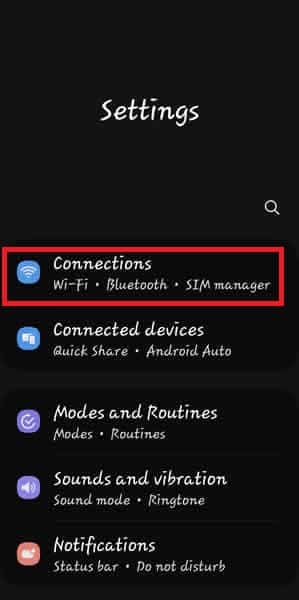
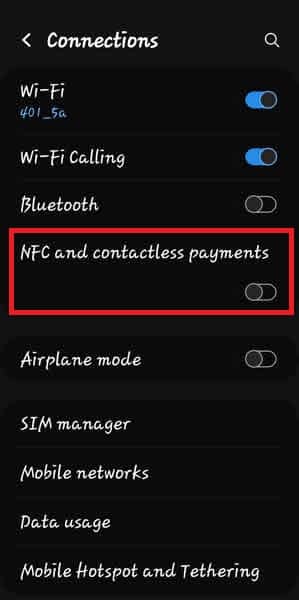
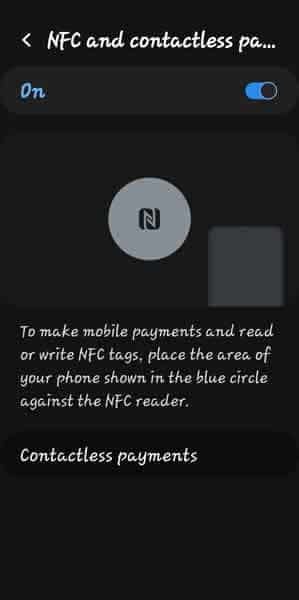
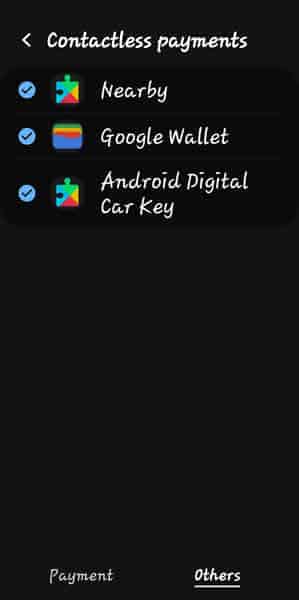
Using NFC to Share Content
- Make sure NFC is turned on for both devices.
- Place the two devices back-to-back, ensuring that the NFC antennas are in contact.
- A pop-up will appear on the sender’s device asking what to share.
- Select the content you want to share (e.g., a photo, a contact, or a link).
- The content will be transferred to the recipient’s device.
Using NFC to Make Payments
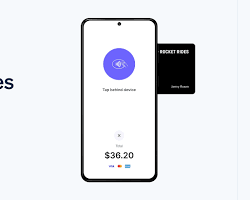
- Make sure NFC is turned on for your mobile device and that you have a mobile payment app installed, such as Google Pay or Samsung Pay.
- Hold your Android device near the contactless payment terminal.
- A pop-up will appear on your device asking you to confirm the payment.
- Enter your PIN or fingerprint to authorize the payment.
Additional Notes
- The location of the NFC antenna on your device may vary depending on the model. You can usually find it on the back of the device, near the top or bottom.
- Some Android devices may require you to enable “Android Beam” before you can use NFC to share content. Android Beam is a feature that allows you to share content by tapping the NFC antennas of two devices together.
Troubleshooting NFC Issues: Resolving Common Challenges
Occasionally, you may encounter minor issues while using NFC. Here are some common NFC troubleshooting tips:
- Ensure NFC is Enabled: Double-check that NFC is enabled on both devices involved in the interaction.
- Maintain Proper Distance: Maintain close proximity between the NFC-enabled devices. The ideal distance is typically within a few centimeters.
- Check for Interference: Remove any potential sources of interference, such as metal objects or cases, that could block NFC signals.
- Update Device Software: Ensure your device’s operating system and NFC-related apps are up to date.
- Contact Device Manufacturer: If the issue persists, contact your device manufacturer for further assistance.
- Optimizing Your NFC Experience: Maximizing NFC Benefits
Optimization tips for How to Use NFC On Android:
- Set Default NFC Actions: Assign default actions for common NFC interactions, such as launching specific apps or performing tasks, to streamline your NFC usage.
- Protect Your NFC Devices: Utilize security measures, such as passwords or PINs, to protect your NFC-enabled devices from unauthorized access.
- Stay Informed: Keep yourself updated on the latest NFC developments, including new applications, security updates, and compatibility with emerging technologies.
Frequently asked questions (FAQs) and answers for How to use NFC on Android:
Q: What is NFC?
A: NFC stands for Near Field Communication, a short-range wireless technology that allows devices to communicate when they are brought into close proximity, typically within a few centimeters of each other.
Q: Is my device NFC-enabled?
A: Most smartphones released in recent years have NFC capabilities. Check your device’s specifications or settings menu to confirm NFC availability.
Q: How do I enable NFC on my device?
A: The location of the NFC setting may vary depending on the device manufacturer. Look for options like “NFC” or “Near Field Communication” in the Settings menu.
Q: How do I make contactless payments using NFC?
A: Set up your preferred payment method in Google Pay or Samsung Pay. Ensure your device is unlocked and NFC is enabled. Tap your device on the contactless payment terminal to complete your purchase.
Q: How do I share data between NFC-enabled devices?
A: Make sure NFC is enabled on both devices. Place the devices in close proximity and facing each other. Initiate the data transfer by selecting the appropriate option on one of the devices.
Q: How do I scan NFC tags and stickers?
A: Ensure NFC is enabled on your device. Move your device around the NFC tag or sticker to find the optimal reading position. Some devices may require a dedicated NFC tag reading app.
Q: How to use NFC for access control or authentication?
A: Verify that your device is compatible with the NFC access control system. Ensure your NFC-enabled badge or key fob is properly programmed and active. Check if the NFC reader is functioning correctly.
Q: Here are some common troubleshooting tips for using NFC
- Ensure NFC is enabled on both devices.
- Maintain close proximity between devices.
- Remove potential interference sources like metal objects or cases.
- Update device software.
Q: What are some of the benefits of using NFC?
- Contactless payments for convenience and security.
- Easy data sharing between devices.
- Accessing information and interacting with NFC tags and stickers.
- Streamlined access control and authentication.
Q: Are there any security concerns with using NFC?
A: NFC technology is generally considered secure, but it’s important to take precautions to protect your device and data. Use strong passwords or PINs, keep your device’s software up to date, and avoid sharing sensitive information through NFC.
Common problems and solutions for How to Use NFC:
Problem: NFC is not enabled on my device.
Solution:
- Check your device’s specifications or settings menu to confirm NFC availability.
- Look for options like “NFC” or “Near Field Communication” in the Settings menu.
- If NFC is not already enabled, activate it in the Settings menu.
Problem: I am unable to make contactless payments using NFC.
Solution:
- Ensure you have set up your preferred payment method in Google Pay or Samsung Pay.
- Verify that your device is unlocked and NFC is enabled.
- Check if the payment terminal supports contactless payments.
- Maintain close proximity between your device and the payment terminal.
- If the issue persists, contact your bank or financial institution for assistance.
Problem: I cannot share data between NFC-enabled devices.
Solution:
- Confirm that NFC is enabled on both devices.
- Ensure the devices are in close proximity and facing each other.
- Make sure the data to be shared is compatible with both devices.
- Try restarting both devices and attempting data sharing again.
- If the issue persists, check for software updates on both devices.
Problem: I cannot scan NFC tags or stickers.
Solution:
- Ensure NFC is enabled on your device.
- Check if the NFC tag or sticker is still active and has not been damaged.
- Try moving your device around the NFC tag or sticker to find the optimal reading position.
- Download a dedicated NFC tag reading app if the default NFC functionality doesn’t work.
- Contact the manufacturer of the NFC tag or sticker for further assistance.
Problem: I am unable to use NFC for access control or authentication.
Solution:
- Verify that your device is compatible with the NFC access control system.
- Check if your NFC-enabled badge or key fob is properly programmed and active.
- Ensure the NFC reader is functioning correctly.
- Contact the building administrator or security personnel for assistance.
Conclusion:
Embracing the Future of NFC. NFC technology is rapidly evolving, opening up new possibilities for contactless communication and enhancing.




